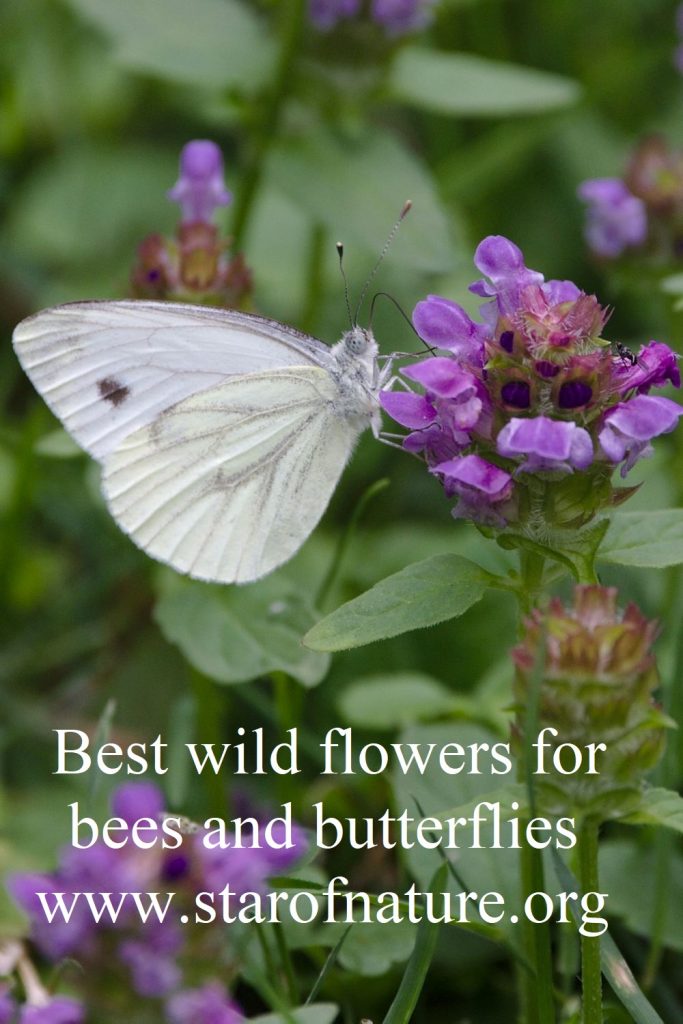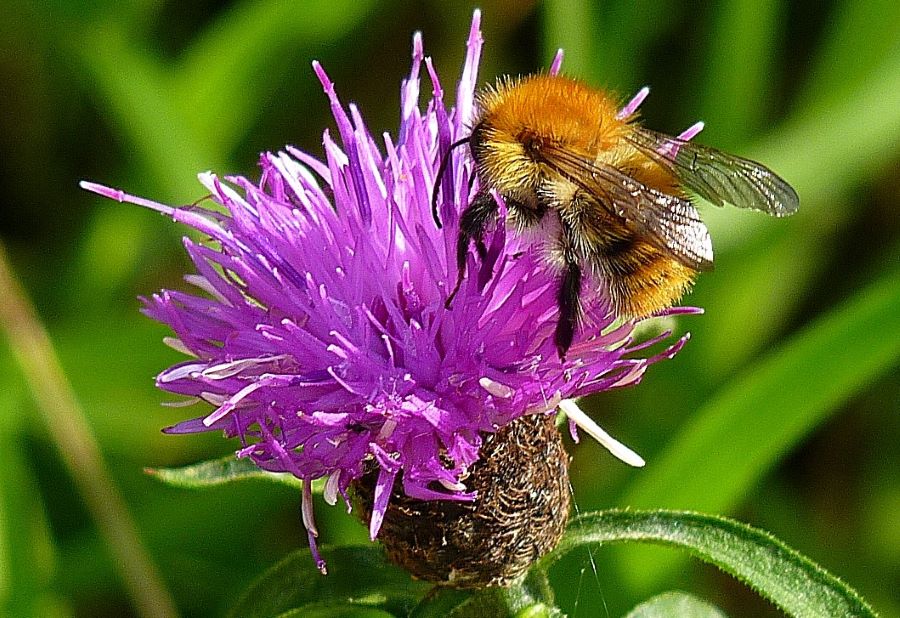Best Wild Flowers for Bees and Butterflies
One of the most enjoyable ways to make one’s garden more nature-friendly is to grow wild flowers that support bees and butterflies. Such flowers can bring life and beauty to the garden any time of the year. They are also very easy to grow, and there is a wide range of species available, suitable for every taste and situation.
Why are wild flowers important for bees?
Flowers provide bees with their primary food: nectar and pollen. Nectar is carbohydrate-rich substance that bees turn to honey. Pollen is rich in proteins and is also collected and stored by bees. It is eaten by adult bees and is used by them to feed their young. Bees need pollen throughout the entire season when they are active, but it is particularly indispensable to them in spring, when the queen is actively laying eggs and the colony is expanding.
Nectar and pollen are equally important: if there is a shortage of pollen, bees will starve, even if nectar is available. Moreover, if pollen is not present in sufficient quantities in spring and early summer, the queen will stop laying eggs, and the colony will not be able to grow and produce enough honey to survive the winter.
Most wild flowers are excellent sources of either nectar, or pollen, or both. But the same cannot be always said about decorative garden flowers. Many were bred for striking appearance, and in the process lost their smell, as well as their ability to produce pollen and nectar. Most double flowers, for example, such as many roses and dahlias, sadly have little to offer to bees.
Wild flowers have evolved to co-exist with local insects and have formed a mutually beneficial relationship with them. This again is often missing in exotic decorative flowers that may have originated and adapted to life in a very different environment.
Which wild flowers are best for bees?
Some flowers are excellent sources of nectar, whereas others produce a large quantity of pollen, and there are also those that excel at both.
Good sources of pollen are various wind-pollinated plants. Their pollen is very light, so that it could be easily carried by the wind. It is produced in huge quantities, so that when it ripens and is released, it literally saturates the air. Most grasses and many trees, including pine, birch, willow and early flowering hazel, are wind pollinated.
Grasses flower in the summer, whereas most wind-pollinated trees bloom in spring. Such early-flowering trees are immensely important to bees, because this is the time when they need pollen most. Areas where pollen-producing trees are abundant are therefore perfect for insects.
But wind-pollinated plants are not the only source of pollen. Many flowers that are pollinated by insects, rather than wind, are also great pollen producers. An example of this is dandelion. It produces both nectar and pollen, but it is its very abundant and nutritious pollen that makes it particularly attractive to bees. Dandelion seeds prolifically, and areas where it has not been eliminated by intensive farming turn bright yellow in spring, and are excellent for bees.
Plants produce nectar in different quantities and some, including maple, lime tree, chicory, rosebay willowherb, sunflower and pumpkin, are particularly prolific.
Are bees, bumble bees and butterflies attracted to the same flowers?
Many flowers are excellent for all the three species – bees, bumble bees and butterflies, but insects’ requirements are not all the same. Honey bees have a shorter proboscis (a mouthpart used for sucking up nectar), than bumble bees or butterflies. They therefore cannot get to nectar if it is hidden very deep inside the flower.
And this is the case with lemon balm, for example. Its small white tubular flowers produce a lot of nectar, but it is located too deep for honey bees to reach. It is, however, accessible to bumble bees and butterflies.
The same can be said about lilac. Its flowers have a very strong smell and bright colour, and are generally attractive to insects, including honey bees. They produce a lot of nectar, but it is hidden deep inside the tubular flower and is usually inaccessible to honey bees. It is therefore consumed by insects with a longer proboscis, such as bumble bees and butterflies.
Bees visit lilac flowers only when the conditions for nectar production are particularly good. In certain weather conditions nectar overflows, fills the flower’s long tube and becomes accessible. Such ideal conditions for nectar production – warmth, high humidity and the absence of wind are, however, not very common.
12 wild flowers for bees, bumble bees and butterflies
All the flowers in the list below are perennial, fully hardy and very undemanding. As most wild flowers, they are resistant to pests and diseases, and easy to grow organically. They are all highly attractive and would look lovely in any garden. Some are indeed grown as ornamental plants.
Dandelion is visited by bees primarily for its pollen, but all other plants are superb sources of both pollen and nectar. Their nectar is easily accessible to all insects, including honey bees.
It is a good idea to grow a range of plants that flower at different times in spring, summer and early autumn, so that insects could always find food in your garden. The approximate flowering times are therefore included in the list below. The flowers can be bought from wild flower nurseries as seeds or young plants.
For more information see related posts: How to Grow Wild Flowers in the Garden and Best Wild Flowers to Grow in the Garden.
Spring
1. Crocus
There are many different varieties of spring-flowering crocus that are all excellent sources of nectar for bees. They flower very early, and are there to greet the insects as they emerge from hibernation and fly for the first time. Crocus also provides bees with an abundance of pollen. It is bright orange in colour and is very noticeable when collected in ‘pollen baskets’ on bees hind legs.
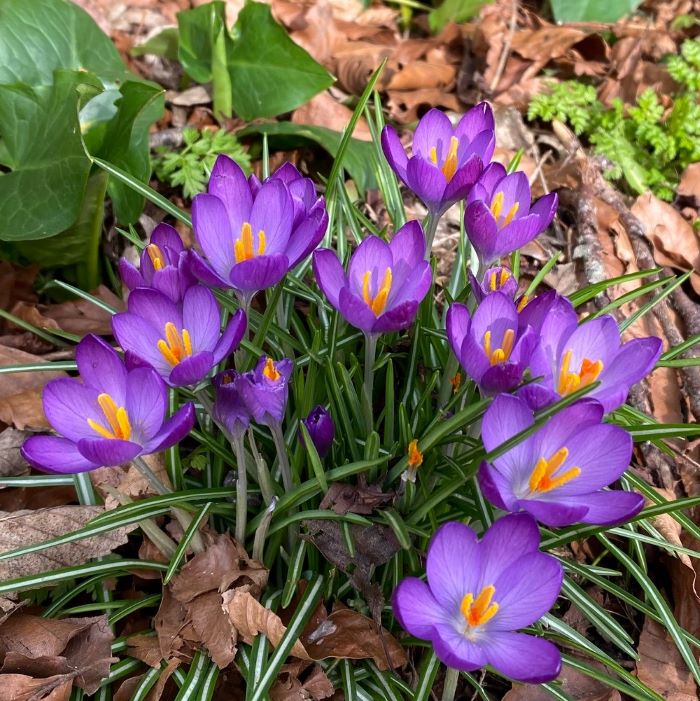
2. Lungwort
Lungwort (Pulmonaria officinalis) is a small woodland plant that will do well in both full sun and partial shade. It flowers in April and May and produces an abundance of nectar. Its early flowering is particularly beneficial for bees, since it provides food for them when there are few other flowers around.
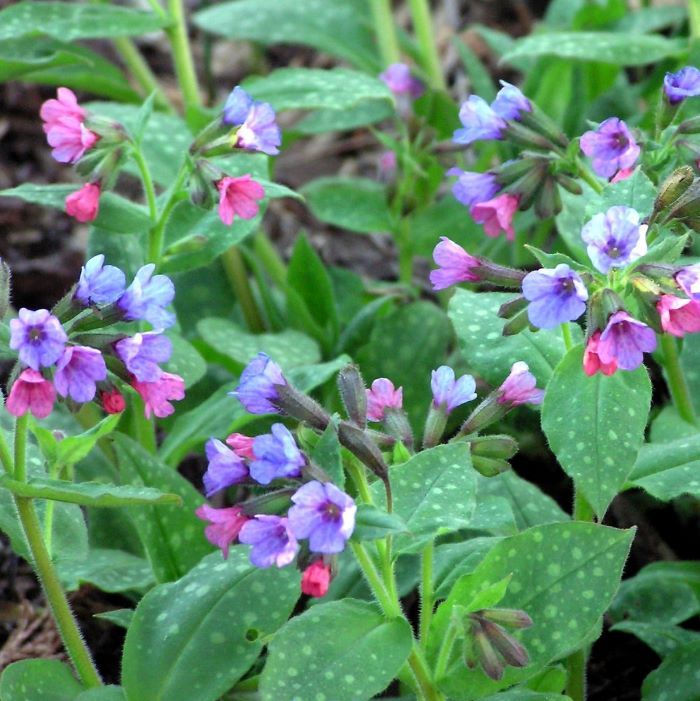
3. Dandelion
Dandelion (Taraxacum officinale) is another early spring insects’ favourite that produces masses of pollen at the time when it is most needed. It can be invasive, but let it nevertheless grow in your lawn: its advantages outweigh its problems. Its mass flowering in April or May is an exceptionally beautiful event. It also flowers less prolifically for the second time in September which is an additional benefit, since it is the time when flowers are scarce.
Dandelion leaves are excellent in salads and can be used in the same way as spinach in vegetable dishes. Its flowers have many culinary uses, including dandelion jam, gelée and wine.
Read my post about using dandelion as a vegetable ‘Dandelion: a Beautiful and Useful Gift of Nature‘.
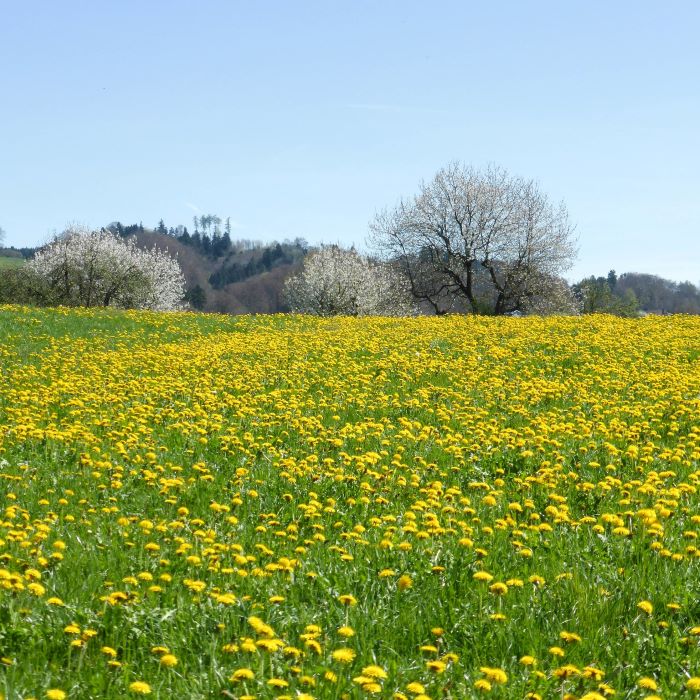
June
4. Ragged-robin
Ragged-robin (Silene flos-cuculi) flowers in late May and June, and though its flowering period is shorter than that of some other plants, it has an advantage of blooming at an important time. Bee-keepers have an expression ‘June gap’, describing a period when flowers can be scarce. It comes when the trees, including cherries, apples and maples, and various spring ephemeral plants, have finished flowering, but the next wave of mass flowering has not yet arrived. It can be a difficult time for bees. Flowers that fill the ‘June gap’ are therefore extremely valuable.
Ragged-robin blooms prolifically, and its flowers are always covered with bees. It does best in rich crumbly soil. An application of mulch in early spring increases flowering and therefore nectar production.
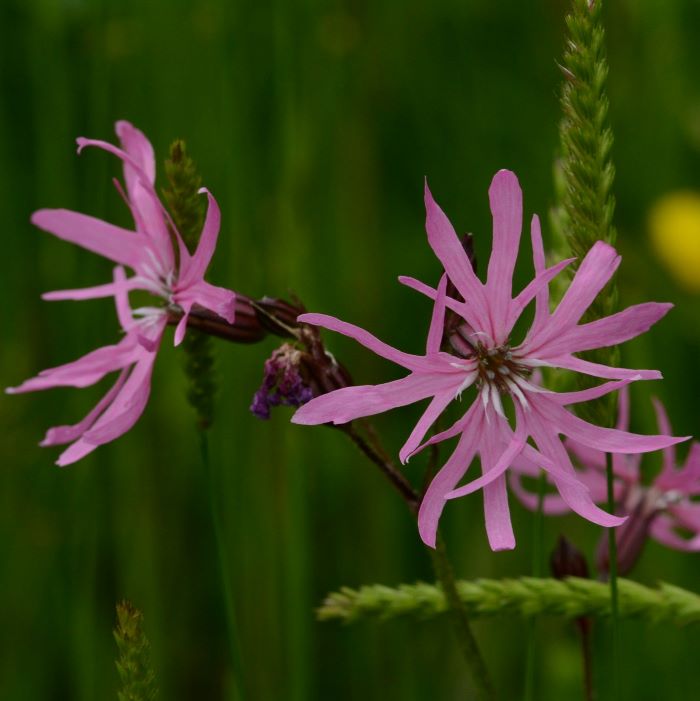
5. Jacob’s ladder
Jacob’s ladder (Polemonium caeruleum) produces dense clumps of very attractive leaves and stately flower stalks about 30-50cm tall. It is often grown as a decorative pant. It is surprisingly undemanding and in my experience does well even in poor compacted soils. It flowers in June and July and produces an abundance of nectar and pollen. It prefers sun, but will do well in partial shade.
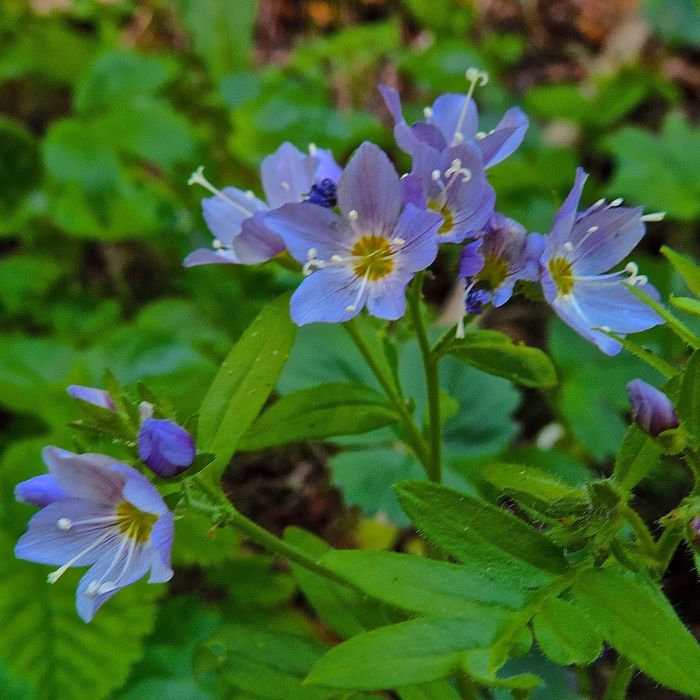
6. Meadow crane’s-bill
Meadow crane’s-bill (Geranium pratense) flowers from June to September and is an outstanding plant for bees due to its very long period of flowering. It is rich in nectar and a good source of pollen as well.
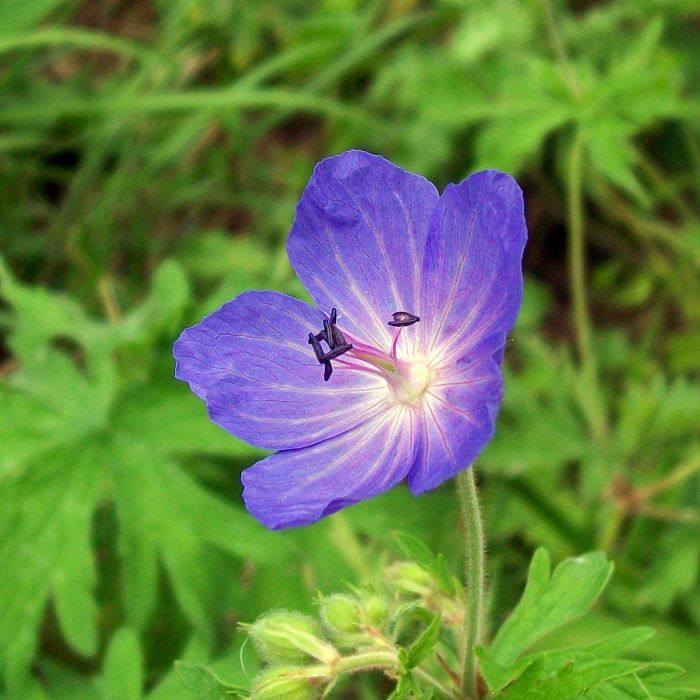
7. White, pink and red clovers
White clover is a very common plant, growing naturally in sunny lawns and meadows. Sadly, a frequent mowing of lawns prevents it from flowering, which is unfortunate, because it is an excellent source of nectar for bees. Left uncut it has an impressively long flowering period, from June to September. Clover produces considerably more nectar on relatively fertile and moist alkaline soils.
Pink clover is less common than white, but is otherwise very similar to it and is an equally prolific source of nectar.
As for red clover, honey bees visit it much less eagerly. The problem is yet again, the structure of its flower. The abundant nectar is hidden deep in the flower’s long tubular shaft. It is therefore difficult for honey bees to reach, but not for bumble bees and butterflies – with them red clover is a great favourite.
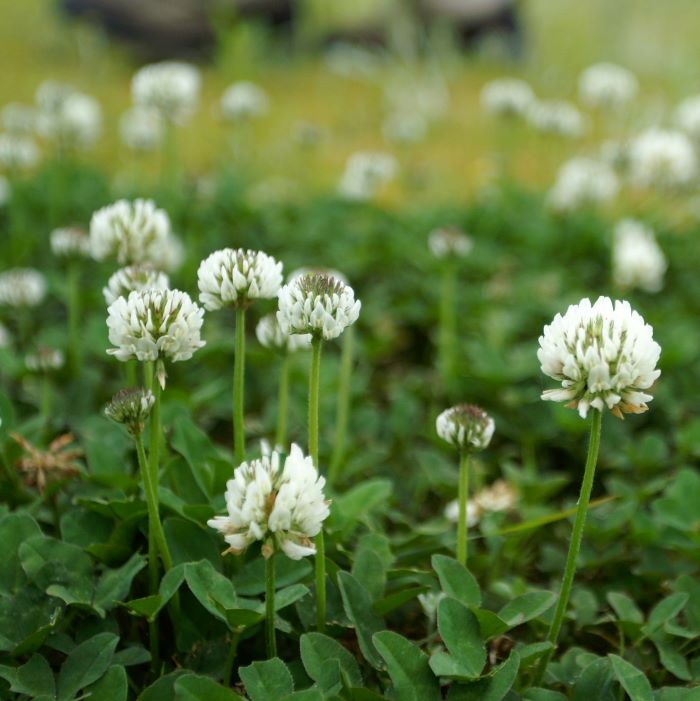
July – September
8. Rosebay willowherb
Rosebay willowherb (Chamaenerion angustifolium) is a beautiful, undemanding and fast-spreading plant. It is about 100-150cm tall and needs full sun to grow its large, bright pink flower heads. It is an outstanding nectar and pollen producer. It blooms for a long time from early July to early September. Its only drawback is that, if the conditions are right, it can become invasive.
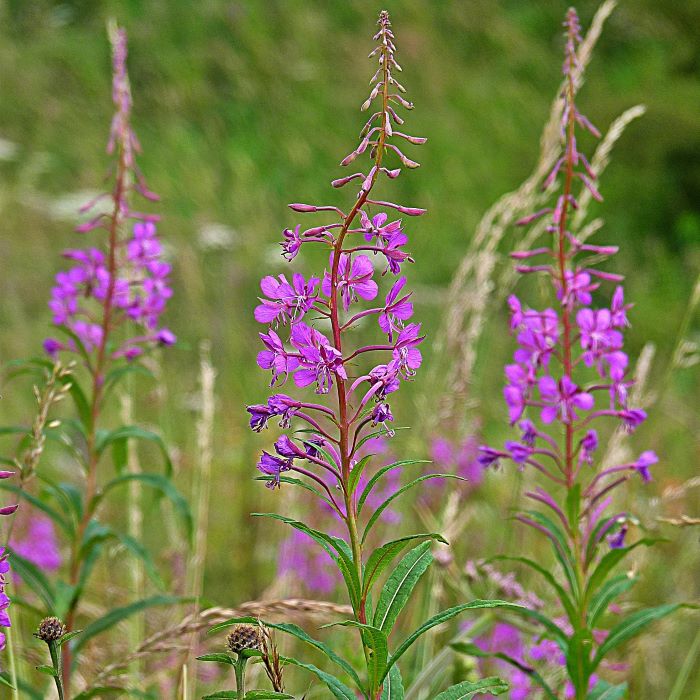
9. Chicory
Chicory (Cichorium intybus) is a tall stately plant (100-150cm) that flowers in July and August. During its long flowering, it is absolutely covered with sky-blue flowers. They last only one day, opening at dawn and fading around 3-4pm, but many more open next day. On a sunny morning it is a lovely sight. Chicory is an outstanding nectar producer, attracting multiple bees and other insects.
Chicory leaves are edible and can be used in the same way as spinach. Its root is used to make a healthy alternative to coffee.
Read my post on growing and using chicory as a vegetable ‘Growing Chicory for Leaves, Flowers and Coffee’.
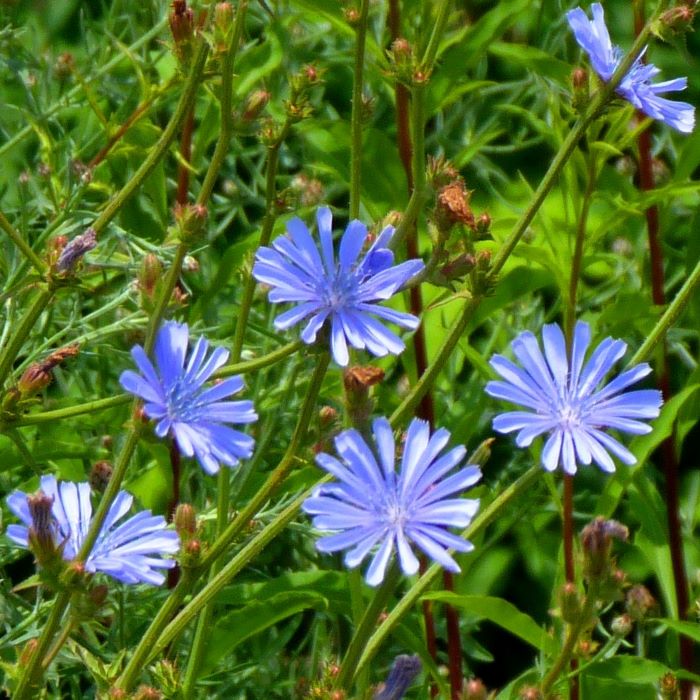
9. Common knapweed
Common knapweed (Centauria nigra) is a very nectar- and pollen-rich plant. It flowers from July to September and is constantly visited by bees, butterflies and other insects. It is a beautiful and undemanding plant that looks particularly impressive growing in groups. Meadows where it has been left to spread turn a beautiful shade of purple in August.
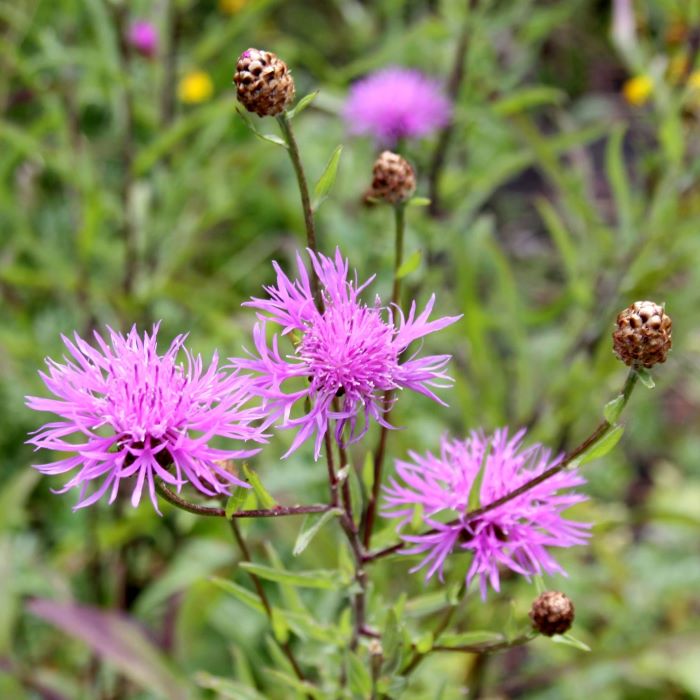
10. Field scabious
Field scabious (Knautia arvensis) is an outstanding nectar- and pollen-producing flower. It blooms in July and August and its flowers are always covered with insects of every description. It is a particular favourite with butterflies. It needs a sunny position and does well on dry, poor soils.
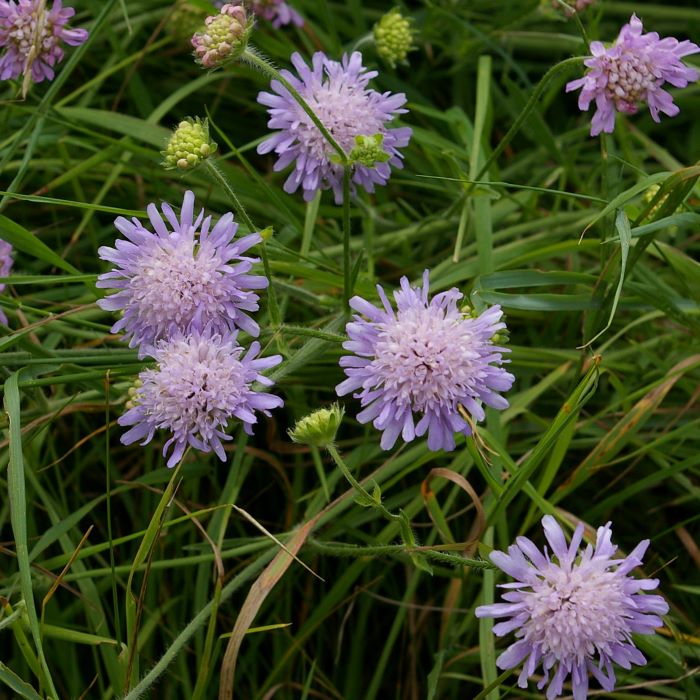
11. Common self-heal
Common self-heal (Prunella vulgaris) is an attractive low-growing plant with unusual purple and brown flowers. It manages to survive and bloom even on frequently mown lawns, where it can be tiny and yet still visited by bees. In better conditions and on richer soil it grows 20-30cm tall, and produces fairly large, showy flowers. It is extremely undemanding and is loved by insects.
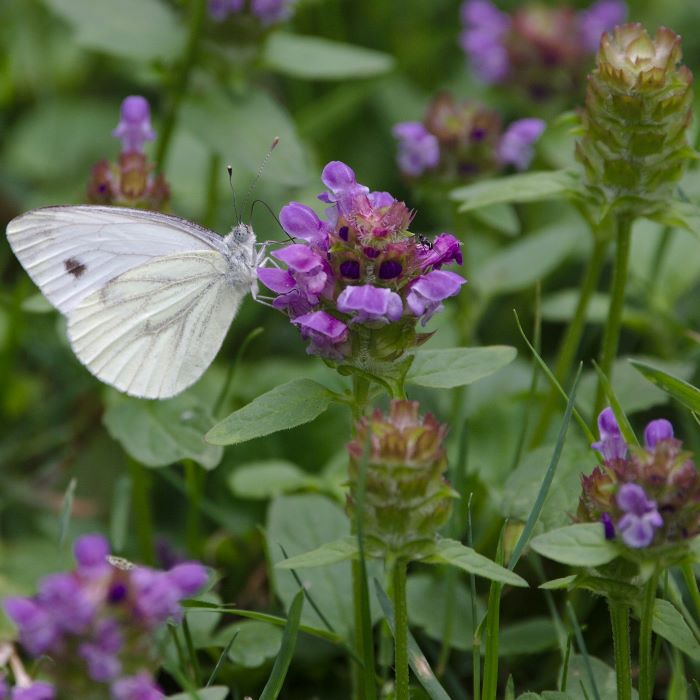
12. Purple loosestrife
Purple loosestrife (Lythrum salicaria) flowers from July to September and is often grown as a decorative plant. It is indeed exceptionally beautiful and is also one of the best nectar- and pollen-producers. It needs wet soil and sun, and so does best planted around the edges of ponds.
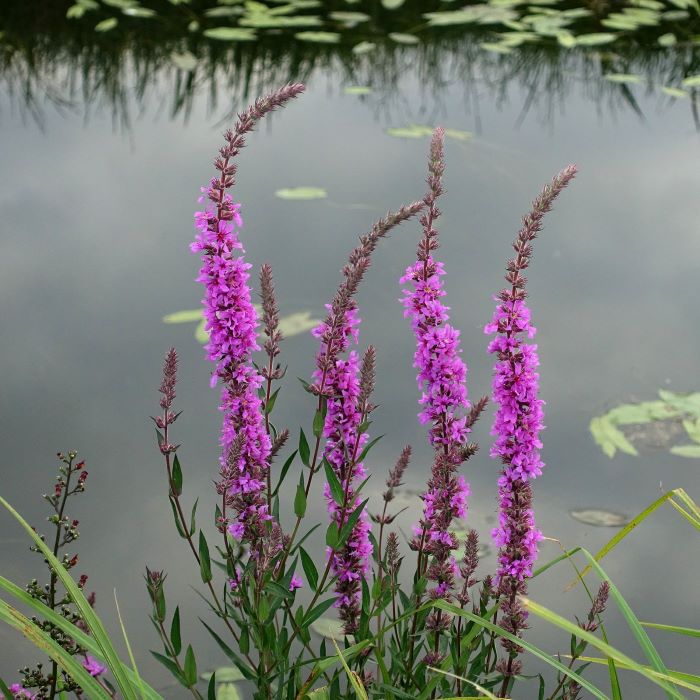
Image credits: lungword by Normanack, dandelion meadow by Thomas, ragged robin by Clint Budd, Jacob’s ladder by Peter Stevens, Meadow crane’s-bill by Peter O’Connor, white clover by Hideyuki Kamon, rosebay willowherb by Cazstar, chicory by Rusty Clark, common knapweed by Drew Avery, field scabious by David Wright, common self-heal by Stanze.
Posts related to ‘Best Wild Flowers for Bees and Butterflies’
Small Scale Rewilding: How to Rewild your Garden
How to Grow Wild Flowers in the Garden
Best wild flowers to grow in the garden
Medicinal Wild Flowers for your Garden
What is Pollen: Basics for a Bee-Lover
What are the Best Nectar-Producing Flowers for Bees?
Organic Pest Control: Sanctuaries for Beneficial Insects
Pin ‘Best Wild Flowers for Bees and Butterflies’ for later
